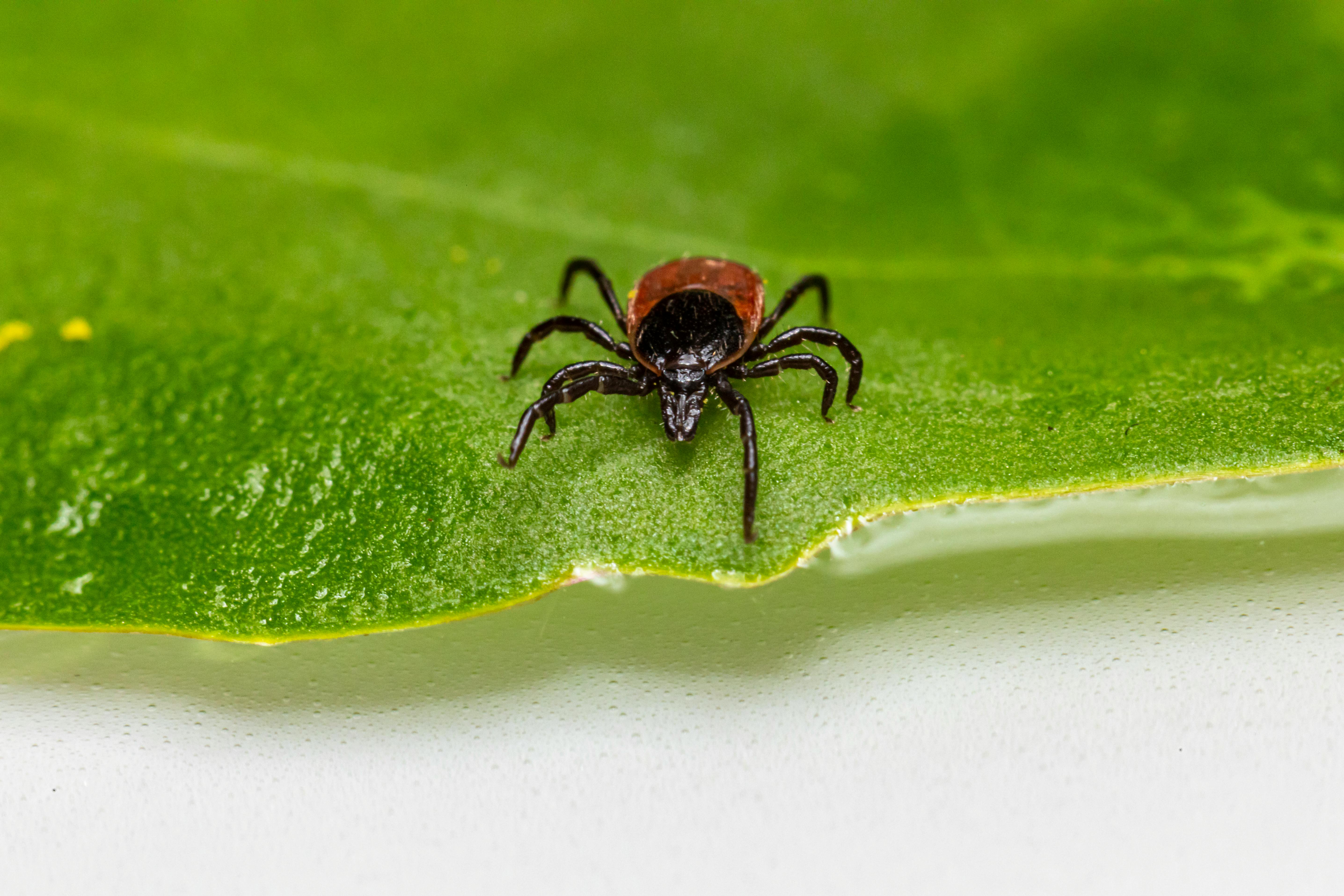Hello, DogStoreOnline community!
May is Lyme Disease Awareness Month, a time to raise awareness about this serious tick-borne illness that affects both humans and animals, including our beloved dogs. As temperatures rise and we spend more time outdoors with our furry friends, it’s important to be mindful of the risks that ticks pose and take steps to protect your dog from Lyme disease. While Lyme disease can lead to serious health issues, the good news is that with preventive measures and early detection, you can greatly reduce the risk of your dog contracting this disease.
In this post, we’ll cover what Lyme disease is, how it affects dogs, the symptoms to watch for, and how to protect your dog during tick season and beyond.
What is Lyme Disease?
Lyme disease is caused by the bacterium Borrelia burgdorferi and is transmitted through the bite of infected black-legged ticks, commonly known as deer ticks. While Lyme disease is more common in certain regions, such as the northeastern and midwestern United States, it can occur anywhere ticks are found. Dogs are susceptible to Lyme disease, and once infected, it can lead to a variety of health problems if not treated promptly.
How Do Dogs Get Lyme Disease?
Dogs become infected with Lyme disease when an infected tick attaches to their skin and feeds on their blood. The tick must be attached for at least 24 to 48 hours to transmit the bacteria, so early detection and removal of ticks are key to preventing infection.
Symptoms of Lyme Disease in Dogs
Lyme disease in dogs can cause a range of symptoms, but it often goes unnoticed in the early stages. Symptoms may not appear until several weeks after the tick bite, and in some cases, infected dogs may not show symptoms at all. Here are some of the most common signs of Lyme disease in dogs:
- Lameness or Limping: One of the hallmark signs of Lyme disease is shifting-leg lameness, meaning your dog may limp on one leg and then switch to limping on another leg. This is caused by inflammation in the joints, known as Lyme arthritis.
- Fever: Dogs with Lyme disease often develop a fever, which may be accompanied by lethargy or a decrease in energy levels.
- Swollen Joints: In addition to lameness, dogs may experience swelling or pain in their joints, making it difficult for them to move comfortably.
- Loss of Appetite: Dogs with Lyme disease may lose interest in food, which can lead to weight loss over time.
- Fatigue or Lethargy: A sudden decrease in activity levels or reluctance to exercise can be a sign of Lyme disease.
- Swollen Lymph Nodes: Infected dogs may develop swollen lymph nodes near the site of the tick bite.
In rare and severe cases, Lyme disease can lead to kidney failure, heart problems, or neurological issues. If your dog shows any of these symptoms, it’s important to seek veterinary care immediately.
Diagnosing and Treating Lyme Disease in Dogs
If you suspect your dog may have Lyme disease, your veterinarian will perform a physical exam and may recommend blood tests to check for antibodies to Borrelia burgdorferi. In some cases, additional tests, such as x-rays or joint fluid analysis, may be needed to assess the extent of the disease.
Treatment for Lyme Disease
The primary treatment for Lyme disease in dogs is a course of antibiotics, typically doxycycline or amoxicillin, which can help clear the infection. In most cases, dogs respond well to treatment, and symptoms improve within a few days. However, some dogs may require additional treatments for joint pain or other complications.
It’s important to follow your veterinarian’s recommendations and complete the full course of antibiotics, even if your dog’s symptoms improve before the medication is finished. This helps ensure that the infection is fully treated and reduces the risk of relapse.
How to Protect Your Dog from Lyme Disease
Prevention is key when it comes to protecting your dog from Lyme disease. Here are some important steps you can take to minimize your dog’s risk of contracting Lyme disease:
1. Use Tick Prevention Products
The most effective way to protect your dog from ticks and Lyme disease is by using tick prevention products. These include:
- Tick Collars: Tick collars, such as those containing flumethrin or deltamethrin, can repel ticks and prevent them from attaching to your dog.
- Topical Treatments: Spot-on treatments, which are applied to your dog’s skin, can kill and repel ticks. These treatments usually last for a month.
- Oral Medications: Oral tick preventatives, available by prescription from your vet, work by killing ticks when they bite your dog. Many oral medications protect against both ticks and fleas.
Talk to your veterinarian to determine which tick prevention product is best for your dog based on their size, breed, and lifestyle.
2. Perform Regular Tick Checks
After spending time outdoors, especially in wooded or grassy areas, it’s important to check your dog for ticks. Pay special attention to areas where ticks like to hide, such as:
- Around the ears
- Under the collar
- Between the toes
- Around the tail
- In the groin area
If you find a tick, use tweezers or a tick removal tool to carefully remove it by grabbing the tick close to the skin and pulling it straight out. Be sure to clean the area with antiseptic afterward.
3. Avoid Tick-Prone Areas
While it’s not always possible to avoid areas where ticks are present, especially if you enjoy outdoor activities with your dog, there are ways to reduce your dog’s exposure to ticks:
- Stay on Trails: When hiking or walking with your dog, stick to well-maintained trails and avoid tall grass, brush, and wooded areas where ticks are more likely to be found.
- Keep Your Yard Tidy: If you have a yard, keep the grass short and clear away any debris or leaf piles where ticks may hide. You can also create a barrier of wood chips or gravel between your lawn and wooded areas to reduce the likelihood of ticks entering your yard.
4. Vaccinate Your Dog
In regions where Lyme disease is prevalent, your veterinarian may recommend vaccinating your dog against Lyme disease. The Lyme vaccine is most effective when used in conjunction with other tick prevention methods. Talk to your vet to see if this vaccine is appropriate for your dog.
5. Regular Vet Checkups
Routine veterinary checkups are essential for monitoring your dog’s health and catching any potential issues early. Your vet can check for signs of tick-borne diseases and ensure that your dog’s tick prevention plan is working effectively.
Conclusion
As we recognize Lyme Disease Awareness Month this May, it’s important to remember that prevention and early detection are key to protecting your dog from this serious disease. By using tick prevention products, performing regular tick checks, and staying vigilant about your dog’s health, you can help keep your furry friend safe and healthy during tick season and beyond.
At DogStoreOnline, we’re committed to helping you care for your dog’s health and well-being. Let’s work together to raise awareness about Lyme disease and take the necessary steps to protect our dogs from this preventable illness.
The DogStoreOnline Team
For more information on Lyme disease prevention and care, visit our website. Share your tips for keeping dogs safe from ticks using the hashtag #DogStoreOnlineLymeAwareness for a chance to be featured on our page!



